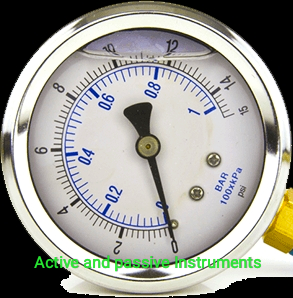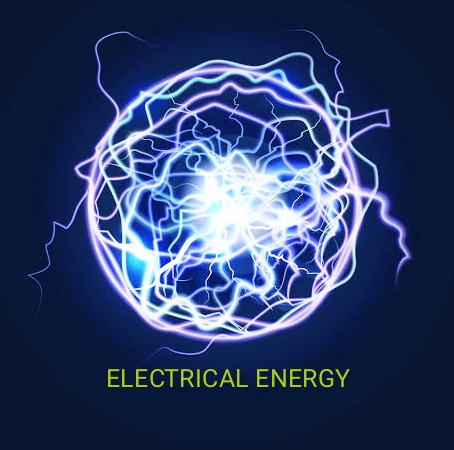Active and passive Instruments
Active and Passive Instruments:
Passive Instruments:
The instruments where the output is produced completely by the quantity that is measured are called passive instruments.
The example of passive instrument is a pressure gauge.Fig shows a pressure
gauge.
gauge.
 |
| Passive Instrument |
As the pressure in the liquid changes, the piston moves.The pointer is connected to the piston.
No other source of energy is used. The liquid pressure is the only source.
Thus,the piston and pointer movement while measurement is entirely dependent on the liquid pressure.
Active Instruments:
Active instruments are the instruments in which the quantity to be measured activates the magnitude of external power input source that produces the measurement.
The liquid level indicator is an example of an active instrument.Fig.1.4.2 shows a
liquid level indicator.
liquid level indicator.
 |
| Active Instruments |
The power source is required in order to sense the position of float.
The position of float is proportional to the liquid level of the tank.As the level of tank
changes,the float position also changes.
changes,the float position also changes.
The variable to be measured changes the value of the power source, as the change in float level changes the slider potentiometer also moves.This in turn changes the external power input.
Advantage of passive Instruments
They are simple to design.
They are cheap.
Disadvantage of passive Instruments
The resolution is less and resolution cannot be easily increased
Some passive Instruments are pressure gauge, glass thermometer, voltmeter
Advantage of Active Instruments
The resolution is adequate and can be
adjusted by adjusting magnitude of
external energy input.
adjusted by adjusting magnitude of
external energy input.
Disadvantage of Active Instruments
They are complex in design.
They are costly.
Some Active Instrument is liquid level indicator





Comments
Post a Comment